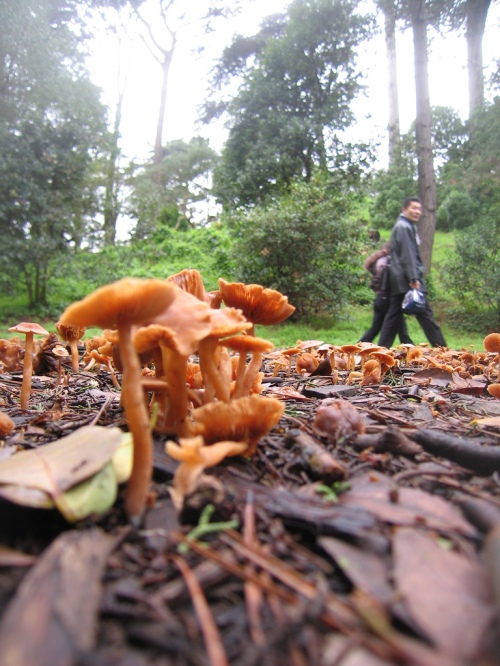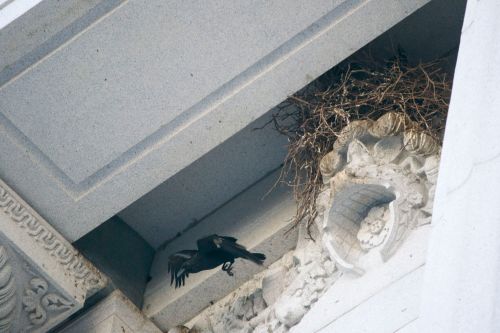
“Commuturalism” I’ll define as using ones commute as a time to practice being a naturalist – to paying attention to the nature I find on my commute. I’m lucky to live in a city where I have a job to which I can bike or walk.
My interest in ravens started in earnest a few years ago. I stopped to watch a raven flying at 7th and Mission above the plaza of the new federal building. It was a beautiful thing. What really got my attention though was when it flew into a nest high up on a federal courthouse.
For the next couple months, I stopped by nearly every day to watch the progress of a raven pair, bringing up 4 nestlings into the world. After they’d flown, I started to pay more attention, and as the year passed I started to write things down, and started to ask questions. The first most obvious question: would they come back?
The other thing that kept me going, was something I’ve learned over time at all these other lectures I’ve come to, and had a hand in arranging (full props to Philip Gerrie for that task). That is how often a question comes up to which the lecturer doesn’t know the answer. And as I started to read about ravens, I felt there were plenty of gaps, plenty of things that all these information sources didn’t talk about.
And those ravens did come back, until they were driven off by crows. Which lead to more questions, and the need for me to actually be able to differentiate the two. I began altering my commuting route, and eventually found another pair of ravens, and then a couple more.
This year, I found 11 active nests mostly on the north eastern side of the city, with a couple outliers in the south. 6 of these nests were on trees, 1 was on a ship, 1 was on a sign, 3 were on buildings, and one was on a bridge.
In the lecture, I talked about the history of ravens in general, their distribution, and their distribution and numbers here in San Francisco.
I spent a good portion of the lecture going over the difficulties of identifying a raven and a crow. Ravens are bigger, have massive beaks, longer wings, a wedge shaped tail that’s more ragged when straight. However all these clues can be meaningless when the bird is not that far away.
There are other clues: behavioral – ravens fly higher and will ride thermals , crows tend to nest with some helpers, raven nests are more visible. I’ve found the easiest way to find a raven, and sometimes the only sure way to know, is by sound. Ravens have a much more varied sound range, and calls that are distinct from crows.
I spent the last third of the lecture going through the lives of the ravens I’ve met, talking about how they nest, the odd choices they seem to sometimes make, the difficulties that the parents and nestlings have. I spoke on what they eat, where they sleep, and how they raise their fledglings.
We ended the talk with talking about some of the problems ravens cause putting more pressure on populations of ground nesting birds in particular – the snowy plover chief among them. Ravens are here in numbers now because ultimately we leave a lot of food around for them, but as smart, opportunistic creatures, that is not the only thing they’ll eat.
I suggested at the end of the lecture that what we need is better data, in particular about their overall numbers, and their habits through the city: how the flocks move, to where, and when.
If your interested in helping out, or if you have any information about raven nests, or roost locations, please drop me an email at acotter@nonsensical.com.
If you have your own SF raven stories to share, you can send them to me by email, or share them in the comments below. I’ll hopefully be making a slightly simpler guide to identifying crows and ravens, with a better intro to how they sound. In the meantime:
Here are the slides from my lecture. (slightly edited from the night of the lecture)
P.S. Thanks again my colleague Philip for trusting enough to let me speak, and thanks to my wife for putting up with my strange outings, and capacity to stop dead in the street to listen to birds.
Read Full Post »


